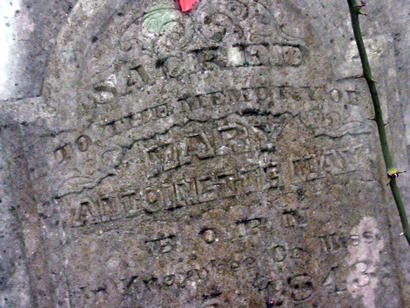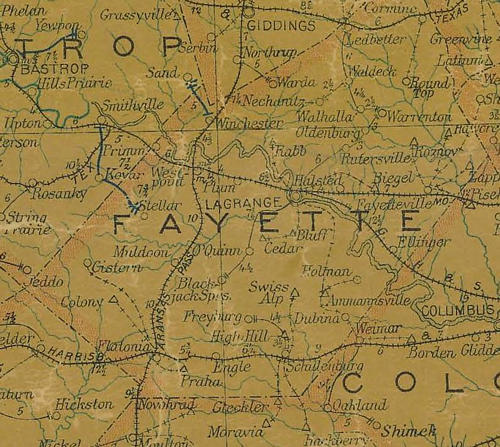Lyons, Texas. (original) (raw)
History in a Pecan Shell
1. Also known as Lyonsville, part of league of land granted to Kesiah Crier, a widow with three children, in 1831 by Mexican government. Kesiah started selling tracts of her land after 1845.
2. Community named after the Lyons family who were attacked by Comanches; the father was killed and a son was captured and raised among the Indians.
3. By circa 1853, a store and post office was built by Neil McKinnon. The Navidad Baptist Church purchased acreage for a church that same year in the T. Taylor League, southeast of Lyons Post Office.
4. Lyons Lodge No. 195, AF&AM, was organized in 1856 and met in a room on the McKinnon farm.
5. Lyons population peaked around 1860; four physicians lived in the area, and a saloon and other businesses were established.
6. 1861 � the Lyons Lodge constructed a building for a church and school on the McKinnon farm.
7. During the Civil War, property was ruined and stock driven off, so settlers moved away after the war, and the town disappeared. Some moved to Blum Hill, or later, High Hill. Others moved to Schulenburg and established businesses when the railroad was built there in 1873.
-
Historical Marker (Highway 77 1/2 mile South of Schulenburg):
Site of Former Town of Lyons
Early town on land grant of Keziah Cryer. Named for settler James Lyons, killed by 1837 Indian raiders, who kidnapped his son Warren. In 1860s town had stores, Masonic Lodge, school, post office; and was on "Cotton Road" to Mexico, but it died in 1870s when the Southern Pacific Railroad was built.
1972

Historical Marker (2240 Vacek Loop, Schulenburg):
Navidad Baptist Cemetery
In 1853, Seth F. and Caroline M. Hazel deeded land to trustees of Navidad Baptist Church and Cemetery. This cemetery served the residents of the pioneer community of Lyons, whether or not they were members of the Navidad Baptist Church. The community was established by the 1840s on land originally granted in 1831 to Kesiah Crier. In the 1870s, however, most businesses and members of the community moved north toward the new railroad town of Schulenburg, and Lyons soon ceased to exist, although some residents continued to live in the area.
The oldest known burial in the cemetery dates to 1853. Many of those interred here are early Texas pioneers, including relatives of the Old Three Hundred, the first families Stephen F. Austin settled in Texas. In addition, veterans of conflicts dating to the Texas Revolution are buried here. Today, though the community of Lyons is gone, the cemetery remains an important reminder of the early town. The burial ground chronicles the lives of area pioneers.
Historic Texas Cemetery - 2004
Texas Escapes, in its purpose to preserve historic, endangered and vanishing Texas, asks that anyone wishing to share their local history, stories, landmarks and recent or vintage photos, please contact us.

